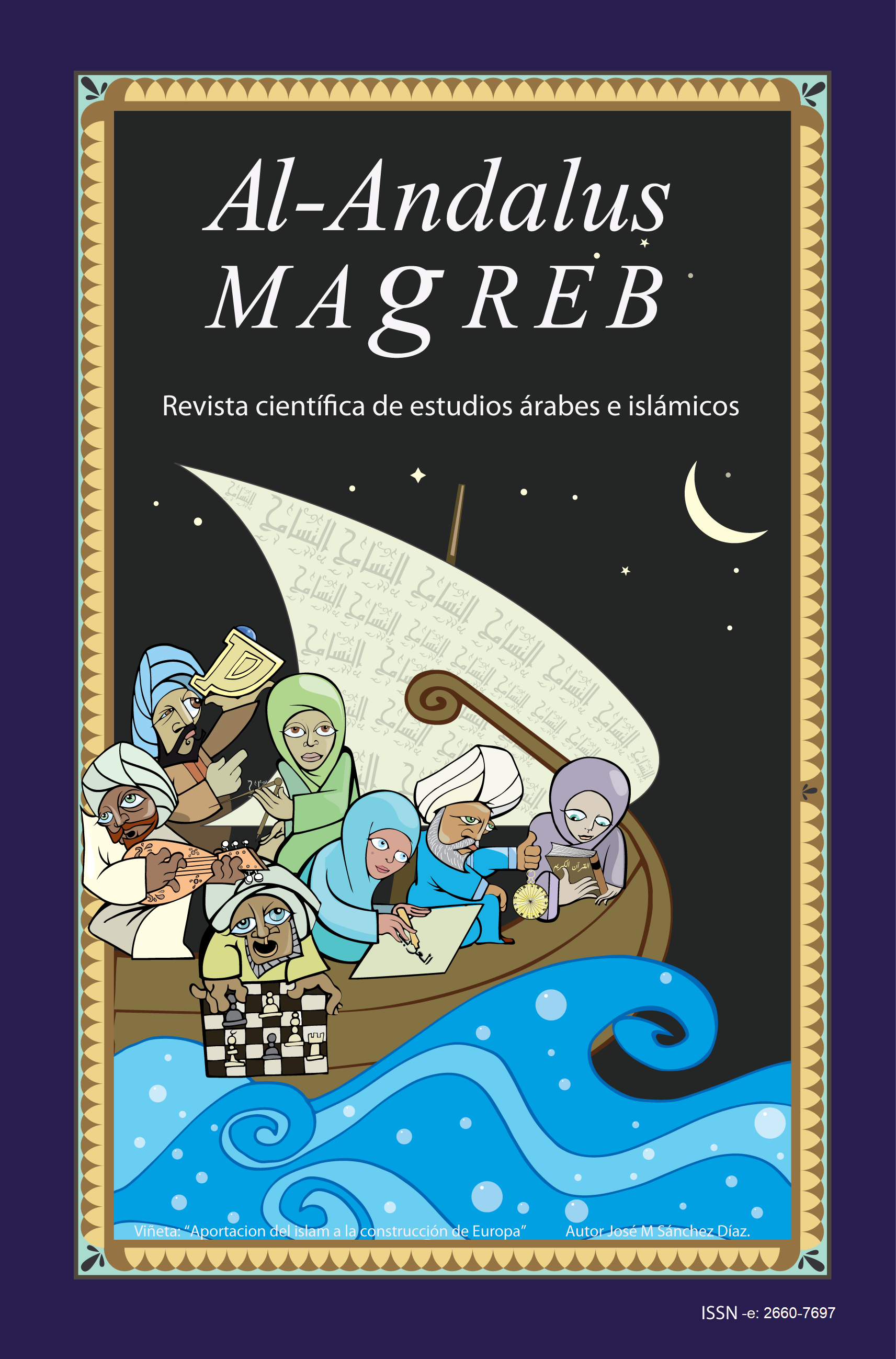Culturemas in tourist texts about Morocco.

Downloads
- PDF (Español (España)) 815
- EPUB (Español (España)) 91
- VISOR (Español (España))
- MOVIL (Español (España))
- XML (Español (España)) 95
DOI
https://doi.org/10.25267/AAM.2021.v28.11Info
Abstract
In the field of tourism we find a diverse range of textual typology (guides, brochures, catalogs, etc.) that is presented as a traveler's companion before, during and after their trip. In these texts, the tourist can have a previous vision of both the place he wishes to visit and the idiosyncrasy of the people that inhabit it. Given that tourism is conceived as a cross-border and -on many occasions- transcultural activity, references and cultural elements unique and exclusively to host countries proliferate in textual productions. They are therefore specifically cultural notions known by the name of "culturemas". When it comes to two geographically, socially and culturally different countries, such as Spain and Morocco, and two languages that present multiple differences in terms of their origin and nature (Arabic and Spanish), problems of translatability arise. Of these units. This work is a reflection on the culturemas in the tourist texts in Spanish about Morocco, and offers a descriptive analysis to overcome certain obstacles posed by its translation into the Spanish language.
Keywords
Downloads
How to Cite
License

This work is licensed under a Creative Commons Attribution-NonCommercial-NoDerivatives 4.0 International License.
Those authors who have publications with this journal, accept the following terms:
a. Authors may retain their copyright and guarantee the journal the right of first publication of their work, which will be simultaneously subject to Licencia de reconocimiento de Creative Commons that allows third parties to share the work as long as its author is indicated. and its first publication this journal.
b. Authors may adopt other non-exclusive license agreements for the distribution of the version of the published work (eg: deposit it in an institutional electronic file) provided that the initial publication in this journal is indicated.
c. Authors are allowed and recommended to disseminate their work through the Internet (eg: in institutional telematic files or on their website) once the manuscript is accepted, which can lead to interesting exchanges and increase citations of the published work. (See El efecto del acceso abierto).
References
NOBS, Marie-Louis (2006): «La traducción de folletos turísticos. ¿qué calidad demandan los turistas?», Granada, Comares. En, CALVI, María Vittoria y MAPELLI, Giovanna (2011): La lengua del turismo géneros discursivos y terminología, Bern: Peter Lang, p. 10.
OMT, Panorama del turismo internacional 2019, [en línea]. Disponible en: https://www.unwto.org/es/publication/panorama-turismo-internacional-2019, [consultado el 20.06.2020]
PUERTAS, Xavier (2008): «Ética y mediación cultural en el ámbito turístico. Los mediadores del ocio turístico y el animador turístico», Brcelona: RCUB Revistes Cientifiques de la Universitat de Barcelona, n° 2, p. 46.
CIAPUSCIO, Guiomar y KUGUEL, Inés Kuguel (2002): «Hacia una tipología del discurso especializado: aspectos teóricos y aplicados». En, GARCÍA PALACIOS, Joaquín y FUENTES MORAN, María Teresa (2002): «Entre la terminología, el texto y la traducción», Salamanca: Alma, p. 73.
LE-PODER, Marie-Évelyne y FUENTES LUQUE, Adrián (2005): La traducción en el sector turístico, Granada: Atrio, p. 87.
CALVI, María Vittoria (2006): Lengua y comunicación en el español del turismo, Madrid: Arco Libro, p. 67
VERMEER, Hans Josef (1983): Translation theory and linguistics. En, LUQUE NADAL, Lucia (2009): «Los culturemas: ¿unidades lingüísticas, ideológicas o culturales?», Launguage Design, n° 11, p. 95.
CALVI, María Vittoria y MAPELLI, Giovanna (2011): La lengua del turismo géneros discursivos y terminología, Bern, Peter Lang, p. 24.
MOLINA MARTÍNEZ, Lucia (2001): Análisis descriptivo de la traducción de los culturemas árabe-español, Barcelona: Universitat Autònoma de Barcelona, p. 89-91.
FISCHER, Martin B. (2000): «La traducción inversa de textos turísticos como ejercicios para fomentar la competencia lingüística», Barcelona: Universidad Pompeu Fabra, [en línea], disponible en: http://www.ucm.es/info/especulo/ele/alcala.html, [consultado el 20.5.2020].
NEWMARK, Peter (1988): A Textbook on translation. En GONZÁLEZ PASTOR, Diana María (2012): Análisis descriptivo de la traducción de culturemas en el texto turístico, Valencia: Universitat Politècnica de València, pp. 34-35.
HURTADO ALBIR, M. Amparo (2001): Traducción y traductología. Madrid: Cátedra, p: 242
MOLINA MARTÍNEZ, Lucia (2001): Análisis descriptivo de la traducción de los culturemas árabe-español, Barcelona, Universitat Autónoma de Barcelona, pp. 46- 66.
HURTADO ALBIR, M. Amparo (2001): Traducción y traductología. Madrid: Cátedra, p: 257.
Dictionnaire Larousse [en línea], disponible en: https://www.larousse.fr/dictionnaires/francais/riad/10910188. [consultado el 16.02.2021].
Diccionario de la lengua española, D.R.A.E, Real Academia Española, Madrid, Espasa-Calpe (23 ed.), 2014.
LÓPEZ LARA, Enrique (2005): «LA IMAGEN TURÍSTICA DE MARRUECOS PROPORCIONADA POR INTERNET: REINTERPRETANDO EL ORIENTALISMO», Murcia, Universidad de Murcia, Cuadernos de Turismo, n° 16, p. 13






